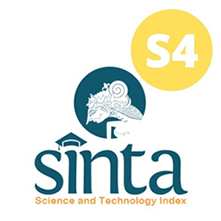The Effect of Lost Data on the IoT Platform on the Formation of Fetal Heart Rate Graphs for Remote Diagnostic Purposes
Abstract
FHR is the fetal heart rate from bpm recording detected by doppler, FHR monitoring is very important to monitor fetal health to avoid fetal distress or fetal death, FHR provides more in-depth information about how the baby is doing compared to traditional monitoring of the baby. IoT media is a medium for monitoring remote sensor values using internet connections, but there are several obstacles, namely there are doubts about the data displayed by IoT media, namely the risk of missing or unsent data, this will be very dangerous if the data that is should be monitored by doctors as a reference for medical diagnosis and treatment is lost or not displayed on the IoT, because if there is missing data it will cause inaccurate diagnosis or health treatment decisions by doctors. The aim of this study to analyze the effect of lost data on the formation of the Fetal Heart Rate graph on the IoT platform as a medium for remote diagnosis. In addition, FHR data can be saved for further diagnosis by a doctor if needed. This study uses an ESP32 microcontroller which will also be used to send data to IoT (Thinger.io). The independent variable used in this study is FHR data before it is uploaded to the IoT, and the dependent variable is FHR data when it is uploaded to the IoT. The greatest data loss is at the farthest distance of 30 meters with a value of 62.47%. Based on the research that has been done, this study has the advantage that the results obtained from Doppler are close to the BPM value in humans. And also this research has developments that can be done in the future such as adding storage to the website that is used for monitoring, and placing the right position on Doppler so that the results are more stable.

This work is licensed under a Creative Commons Attribution-ShareAlike 4.0 International License.
Authors who publish with this journal agree to the following terms:
- Authors retain copyright and grant the journal right of first publication with the work simultaneously licensed under a Creative Commons Attribution License that allows others to share the work with an acknowledgement of the work's authorship and initial publication in this journal.
- Authors are able to enter into separate, additional contractual arrangements for the non-exclusive distribution of the journal's published version of the work (e.g., post it to an institutional repository or publish it in a book), with an acknowledgement of its initial publication in this journal.
- Authors are permitted and encouraged to post their work online (e.g., in institutional repositories or on their website) prior to and during the submission process, as it can lead to productive exchanges, as well as earlier and greater citation of published work (See The Effect of Open Access).











